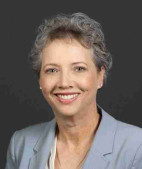 State Superintendent of Public Instruction Tom Torlakson announced Tuesday the availability of statewide chronic absenteeism data for the first time in California, providing a new understanding of absenteeism rates and enabling schools to see at a comprehensive level which students are missing school and in danger of falling behind.
State Superintendent of Public Instruction Tom Torlakson announced Tuesday the availability of statewide chronic absenteeism data for the first time in California, providing a new understanding of absenteeism rates and enabling schools to see at a comprehensive level which students are missing school and in danger of falling behind.
“This is a big step forward in efforts to provide useful information to schools,” said Torlakson. “This data helps us determine which schools, districts, and student groups have the largest concentration of chronic absences, allowing educators and community members to focus attention and resources and take actions needed to keep those students in class and back on the path to academic success.”
The new chronic absenteeism data is available on the California Department of Education (CDE) DataQuest Web site. The reports indicate chronic absenteeism rates of schools and school districts and which student subgroups have the highest chronic absenteeism rates.
“The way the California Department of Education is presenting this data is cutting edge,” said Hedy Chang, Executive Director of Attendance Works, a national nonprofit organization that advances student success by reducing chronic absence. “Making this information available through an interactive channel, allowing the public to access the information and analyze the data in different ways offers the opportunity to identify which schools, districts, and populations are most affected and in need of prevention and early intervention.”
A student is considered a chronic absentee if he or she is absent 10 percent of the days they were enrolled in a school. Chronic absence is different from truancy which counts only unexcused absences and indicates a violation of California’s compulsory attendance laws. Average Daily Attendance (ADA) is the average number of students who attend school each day and is used for state funding purposes.
When California enacted the Local Control Funding Formula (LCFF) in 2013, it was one of only two states in the country to build an indicator around chronic absence. School districts must now track and address chronic absence as part of their respective Local Control Accountability Plan (LCAP), a tool to set goals, plan actions, and leverage resources to meet those goals to improve student outcomes.
Torlakson has focused on reducing the state’s chronic absenteeism rates, especially the rates for racial/ethnic groups and program populations (such as foster youth) which are significantly above the state average. He convenes the State Attendance Review Board (SARB), which recommends how to identify and respond to patterns of chronic absenteeism or truancy.
In its Model School Attendance Review Board Recognition Program, the State SARB recognizes districts which implement a three-tiered approach to reducing chronic absenteeism rates for student populations which are above the district average:
First tier: Focus on preventing attendance problems by promoting a positive school climate.
Second tier: Ensure early interventions for minor attendance problems.
Third tier: Address intensive barriers to school attendance, such as mental health conditions.
Torlakson supported Assembly Bill 2815, which this year expanded the role of attendance supervisors to include more effective strategies to address chronic absenteeism and truancy. These changes will promote a culture of attendance and improve more accurate student tracking.
According to Attendance Works, kindergarten students who are chronically absent are less likely to read proficiently by the end of third grade and more likely to be held back in later grades. By sixth grade, absenteeism is one of the three early warning indicators influencing high school graduation.
The data will help school attendance teams identify patterns in the student groups which are chronically absent and help them implement strategies to keep students in class. This information will raise the awareness of parents, guardians, caregivers, community partners, school personnel, law enforcement, and local businesses of the chronic absenteeism problem and the challenges associated with poor attendance.
“There are many reasons a student can fall into a pattern of being chronically absent that are beyond their control such as an illness, watching a younger sibling while a parent works, caregiving for an older relative, or lack of a reliable ride, or convenient bus route to school,” said Torlakson. “When we identify these challenges, we can link students and their families to all appropriate school and community resources.”
Chronic absenteeism is a state academic indicator and LCFF priority on the California School Dashboard. The new chronic absenteeism data will be included in the dashboard in March 2018.
Information about the expanded duties of attendance supervisors and the definition of a chronic absentee is available on the CDE’s Child Welfare and Attendance Web page.
Like this:
Like Loading...
Related




 Tweet This
Tweet This Facebook
Facebook Digg This
Digg This Bookmark
Bookmark Stumble
Stumble RSS
RSS State Superintendent of Public Instruction Tom Torlakson announced Tuesday the availability of statewide chronic absenteeism data for the first time in California, providing a new understanding of absenteeism rates and enabling schools to see at a comprehensive level which students are missing school and in danger of falling behind.
State Superintendent of Public Instruction Tom Torlakson announced Tuesday the availability of statewide chronic absenteeism data for the first time in California, providing a new understanding of absenteeism rates and enabling schools to see at a comprehensive level which students are missing school and in danger of falling behind.




























REAL NAMES ONLY: All posters must use their real individual or business name. This applies equally to Twitter account holders who use a nickname.
0 Comments
You can be the first one to leave a comment.